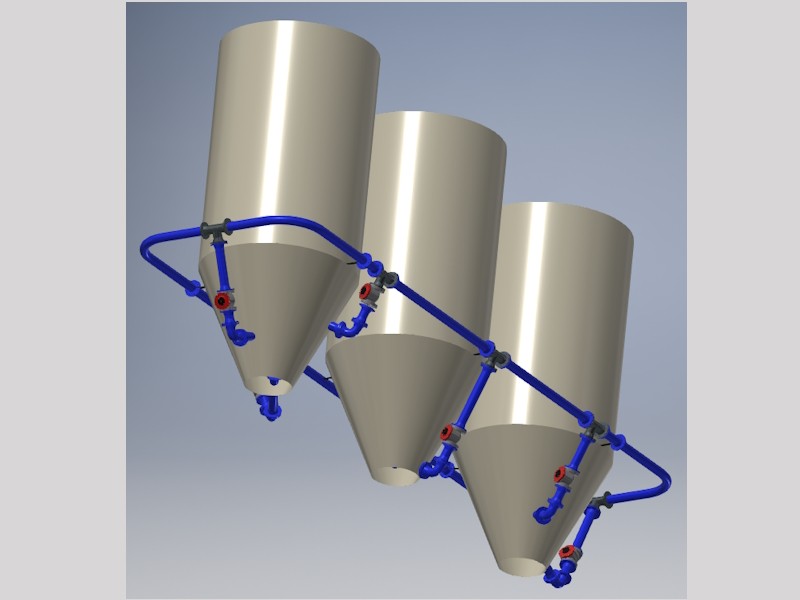Equipment of silo batteries and restricted installation spaces with important structural constraints that did not allow the installation of traditional compressed air cannons complete with 100Lt/150Lt tank.
Installation of AIRFLASH cannon system in the PPI Pick-Power-Impulser variant. PPI is an innovative system that allows you to eliminate traditional cannon tanks by replacing them with a tank pipe that interconnects ALL the applied firing points. This solution makes the ENERGY stored in the INTERNAL TANK PIPE available AT EVERY SHOOTING POINT connected to the network: at each point it is therefore possible to obtain a firing power higher than the limit imposed by the individual tank. The PPI system was created to optimize and reduce investment costs in the event of the need to install multiple firing points in the same area. PPI is compatible with all AIRFLASH valves outside the tank DN50, DN100 and DN150; its maximum power and optimization is achieved in combination with the DOPPIO ZERO valves specially designed for linear insertion into the PPI tank pipe: the AIRFLASH DOPPIO ZERO product valve body becomes an integral part of the pipe and does not need to be removed for ordinary maintenance .

